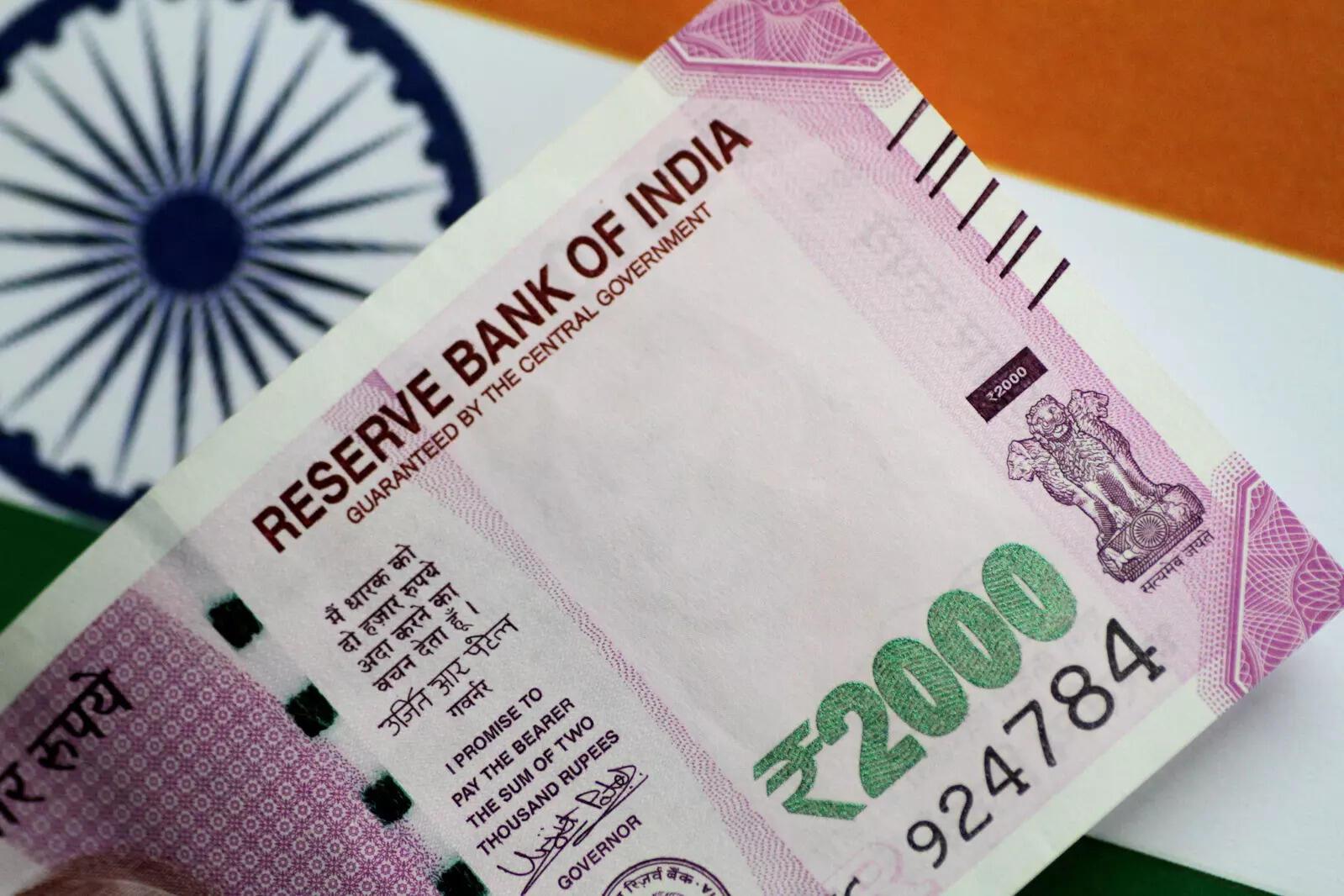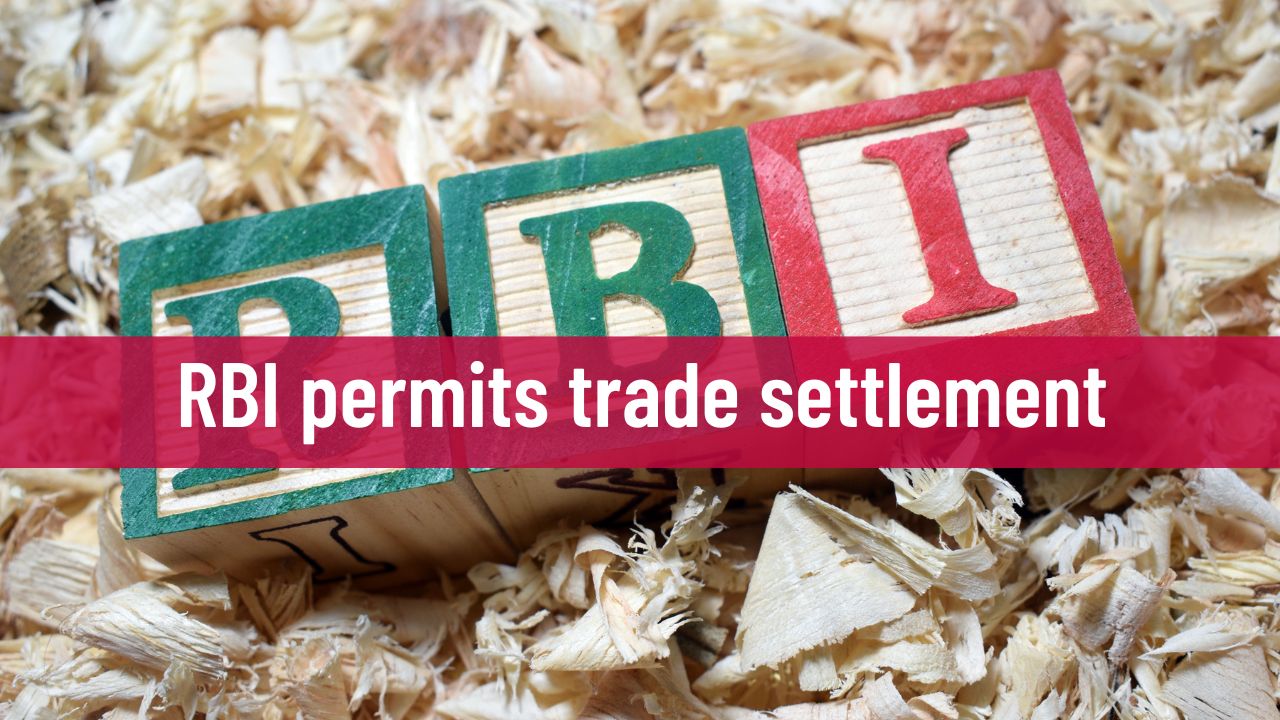India’s Rupee Revolution: A Solution To The Global Dollar Crunch?
India has made provisions to collaborate with as many as 18 other countries to execute trade deals in rupees via 30 separate rupees online banking. The Reserve Bank of India (RBI) has authorized 30 foreign banking relationships between individual Indian banks (including HDFC Bank and UCO Bank) in order to enable international trading in rupees.

India’s Rupee Revolution: A Solution to the Global Dollar Crunch?
India has long worked to establish the rupee as a major reserve currency. The Indian government wants countries that don’t have enough dollars to pay for their trade deals to use Indian rupees instead. So far, 18 countries have agreed to do this.
Sunil Barthwal, India’s Minister of Commerce, has stated that his country is willing to do commerce with countries that are “suffering currency failure or have dollar scarcity” in exchange for the Indian rupee.
The secretary of commerce declared the government’s aim to increase India’s exports to USD 2 trillion by 2030 after the Foreign Trade Policy (FTP) 2023 was released on Friday, stating that the government is focusing on strengthening the rupee payment system.

India has made provisions to collaborate with as many as 18 other countries to execute trade deals in rupees via 30 separate rupees online banking. The Reserve Bank of India (RBI) has authorized 30 foreign banking relationships between individual Indian banks (including HDFC Bank and UCO Bank) in order to enable international trading in rupees.
According to a historic agreement between India and Malaysia, which was announced on Saturday by the Ministry of Foreign Affairs (MEA), the two countries would be able to settle their commerce in Indian Rupee.
This agreement with Malaysia is a significant step in the direction India has been trying to take in increasing the use of the Indian Rupee in international trade settlements. Similar agreements have also been inked by India with countries like Iran, Russia, and the United Arab Emirates.
In response to a question in the Rajya Sabha, the government said that 18 countries had been allowed to create Special Vostro Rupee Accounts to settle payments in Indian rupees. The government had advised banks and trade associations to look into possibilities for rupee commerce with more countries.
Since then, Indian banks have opened unique rupee vostro accounts with banks from multiple countries at the government’s direction, operationalizing the rupee trade arrangement. Sberbank and VTB, Bank of Russia, were the first two foreign lenders to be given approval following the RBI’s announcement of the rules governing rupee trade abroad in July of last year.
This account has also been registered with UCO Bank in Kolkata by Gazprom, another Russian bank without a presence in India. The unique vostro account enabled cross-border trading in rupees and paved the door for rupee payment settlement for trade between India and Russia.
The RBI has also allowed the special vostro accounts to invest the surplus balance in Indian government securities in order to raise awareness of the new structure.
Total Exports
India’s overall exports have already exceeded $750 billion and are expected to reach $760 billion today, which will be a record for the nation. This is a yearly increase of more than 13%.
The WTO’s global trade forecast predicts that growth in world trade will slow down to 1 per cent in 2023 due to global uncertainties, making the export scenario challenging, the government stated in its presentation.
The government stated that India’s economy is expected to expand at a rate that is “more than double that of the globe in 2023,” Data show that over the past six to seven years, India’s exports have surged by almost 75%, compared to a global gain of 28%.
Exports of engineering and agricultural products increased by 81% and 61%, respectively, throughout the time period. Goods related to medicine and electronics had increases of 45% and 163%, respectively.

Marine products and toys saw increases of 63% and 89%, respectively, according to the report. Moreover, the dairy industry will not be required to maintain its average export obligation. It intends to assist the dairy industry in modernizing its technologies.
All trade policy benefits will be made available to exporters in order to increase e-commerce exports. There will be specific outreach and training initiatives for small e-commerce exporters. According to government projections, e-commerce exports should reach $200–300 billion by 2030.
The government plans to set sector-specific goals in order to achieve its ambition of trillion-dollar product exports by 2030. The government would also overhaul the Department of Commerce to modernize it for the future.
RBI’s intervention
The method for rupee-based international settlement may have been designed specifically to ease trade with countries under sanctions like Iran, Sri Lanka, and possibly Russia. But most critically, it was predicted that the action would ease the strain on India’s foreign exchange reserves.
India imports more than it exports, and the value of the rupee has been steadily falling. With a decline of about 10% against the dollar in 2022, the rupee had the poorest performance of any Asian currency.
Using the rupee instead of dollars for foreign commercial transactions will decrease the rupee’s depreciation, albeit to a “very limited level,” and assist in controlling the flow of dollars out of India.
The three countries with the most recently opened Vostro accounts are Russia, Sri Lanka, and Mauritius. A potential rupee-dirham payment system between Saudi Arabia and the UAE could launch this month. India has recommended that these countries use their rupee reserves to purchase government assets.
Nonetheless, it continues to be possible to significantly reduce withdrawals of dollars, even with a small window for settling accounts in rupees. According to reports, more than 30 nations have expressed interest in having their trade settlements made in rupees, and talks are currently being held with the central banks of Tajikistan, Cuba, Luxembourg, and Sudan.
The facilitation of rupee trade is also anticipated to increase exports to Russia, which saw a 17% decline in the first half of this fiscal year to $1.6 billion, primarily as a result of late payments. If the rupee gains incremental worldwide acceptance through international trade settlements, it will be possible to repay loans from financial institutions.
What are the complications?
The “internationalization” of the rupee will make it more difficult to formulate monetary policy, even as it may reduce the transaction costs of international trade and investment activities by reducing exchange rate risk.
A number of variables, including political and economic ties, the availability of commodities, their quality, competitive pricing, and exchange rates, influence international commerce transactions between countries.
For example, some currencies, including those of Bangladesh, Turkey, and the UK, have lost more than 10% of their value relative to the US dollar. Will Turkey, where the Lira has lost about 94% of its value versus the US dollar, continue to import more from India even if the exchange rate is fixed?
The value of the dollar is currently a much more relevant element than bilateral exchange rates in forecasting cross-country trade flows, as the dollar is used for 4.7 times more worldwide invoices than global imports.
So, it will be more difficult to pursue exchange rate stability and a monetary policy that is focused on the domestic economy at the same time “unless supported by big and deep domestic financial markets that may effectively absorb external shocks.”
Price stability is essential for the “internationalization” of a currency after complex financial markets. According to the RBI research, the “internationalization” of the rupee may hinder the central bank’s ability to regulate the domestic money supply and affect interest rates in accordance with local macroeconomic conditions.
The constable of the central bank, T. In October of last year, Rabi Sankar stated that these risks of the rupee’s “internationalization” must be accepted if India is to become a major economic force.
If a substantial portion of a non-trade resident’s was conducted in Indian rupees, then the non-resident would have rupee balances in India and may utilize those rupees to purchase Indian assets.
He has previously suggested that large quantities of these financial assets could render a country more susceptible to external shocks, necessitating the use of more effective regulatory tools for their management.
Promoting rupee invoices with different nations will not be an easy feat in the current global environment of trade restrictions and geopolitical rivalry. Indian private banks that do business in the US are concerned about doing business with Russia.

In addition to being a reflection of the rupee’s external credibility as the world economy integrates, efforts to “internationalize” the currency will be seen as a step towards “de-dollarization” as part of the worldwide movement to international divorce trade from the US dollar.
Although from an Indian perspective, the endeavour is not intended to threaten the dollar’s dominance, it may still have an indirect impact on the services industry, for which we rely on developed markets like the US and Europe.
For the time being, India’s contribution to world trade is insufficient, and we rely on imports of commodities like edible oils, gold, silver, and fossil fuels, making it unlikely that exporting countries will take the Indian rupee into account as a billing currency unless doing so serves their own interests.
India must boost exports and imports, supported by crucial reforms like capital account convertibility, expanding financial markets, and big financial institutions other than the RBI to manage the large-scale inflow and outflow of money in order to make the rupee a highly marketable currency.
Edited by Prakriti Arora




